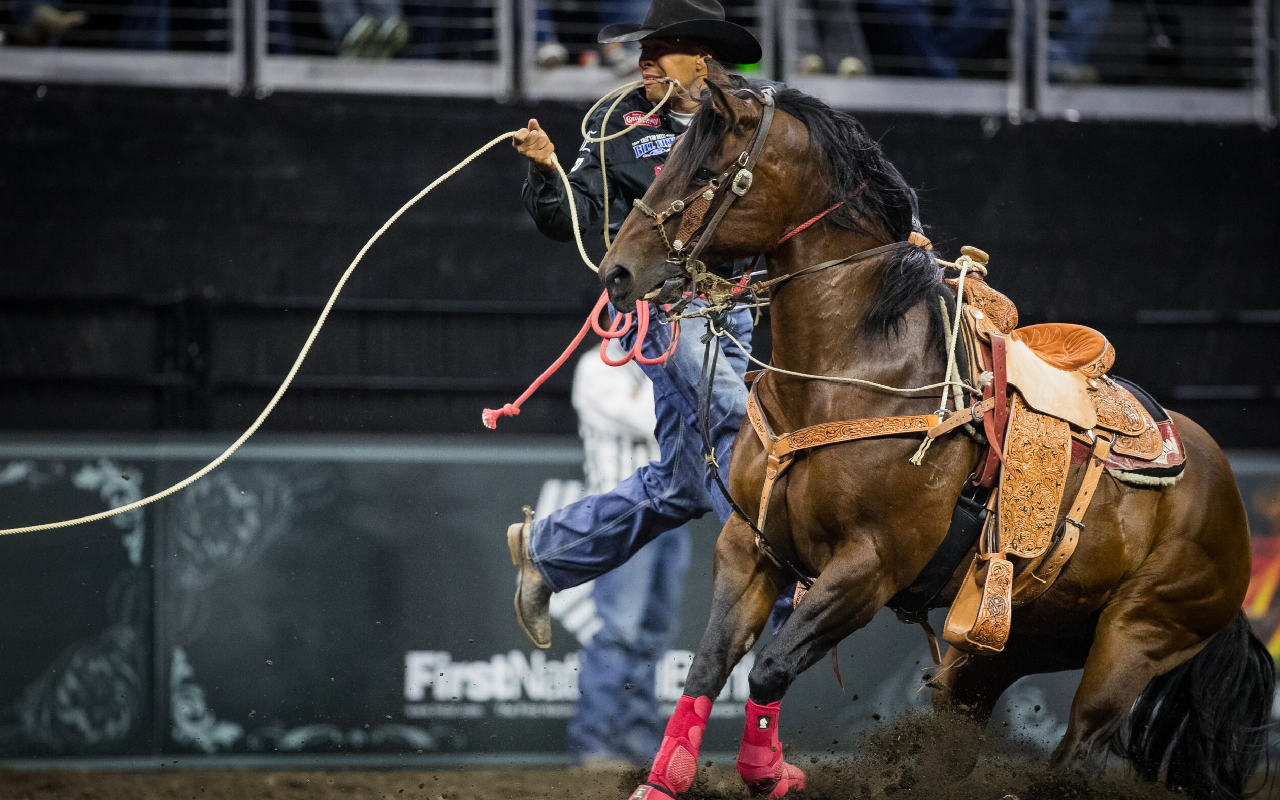If we go back to saddle bronc riding and team roping, the roots of this competition can be traced to the working ranches of the Old West where, when calves were sick or injured, cowboys used to rope and immobilize them quickly for treatment.
As the event matured, being a good horseman and a fast sprinter became crucial to the competitive tie-down roping. Today, cowboys start from a box, a three-sided fenced arena. The fourth side of the box opens into the arena.
The calf receives a head start, determined by the length of the arena. One end of a breakaway rope barrier is looped around the calf’s neck and stretched across the open end of the box. When the calf reaches its advantage point, the barrier is released.
If the cowboy breaks the barrier before the calf reaches its head start, he is assessed a 10-second penalty. The horse is trained to stop when the cowboy throws his loop and catches the calf. The cowboy then dismounts, sprints to the calf, and throws it by hand, a maneuver called flanking
If the calf is not standing when the cowboy reaches it, he must allow the calf to get back on its feet before flanking it. After the calf is flanked, the roper ties any three legs together with a pigging string, a short, looped rope he clenches in his teeth during the run.
While the contestant is trying to accomplish all that, his horse must pull back hard enough to eliminate any slack in the rope but not so hard as to drag the calf. When the cowboy finishes tying the calf, he throws his hands in the air, a signal that the run is completed.
The roper then remounts his horse, rides forward to create slack in the rope, and waits six seconds to see if the calf remains tied. If the calf kicks free, he receives no time.
In this competition, the cowboy’s success lies in the precise teamwork between him and his teamwork and showcases the swiftness and agility of the participant. It’s also a test of precision, speed, and quick thinking.
Below are the top 15 tie-down ropers with their ranking and 2023 season earnings:
- Riley Webb (2)- $283,342.10
- Haven Meged (10) – $209,592.89
- Shad Mayfield (11) – $207,055.64
- Shane Hanchey (24) – $158,879.03
- Brushton Minton (39) – $146,466.91
- Ty Harris (48) – $142,073.80
- Westyn Hughes (49) – $140,822.49
- Caleb Smidt (52) – $138,206.22
- Blane Cox (63) – $132,445.83
- Kincade Henry (65) – $129,609.29
- Cory Solomon (66) – $129,105.72
- Beau Cooper (80) – $121,770.49
- Hunter Herrin (89) – $116,222.18
- John Douch (94) – $115,054.18
- Tuf Coope (96) – $114,326.32
